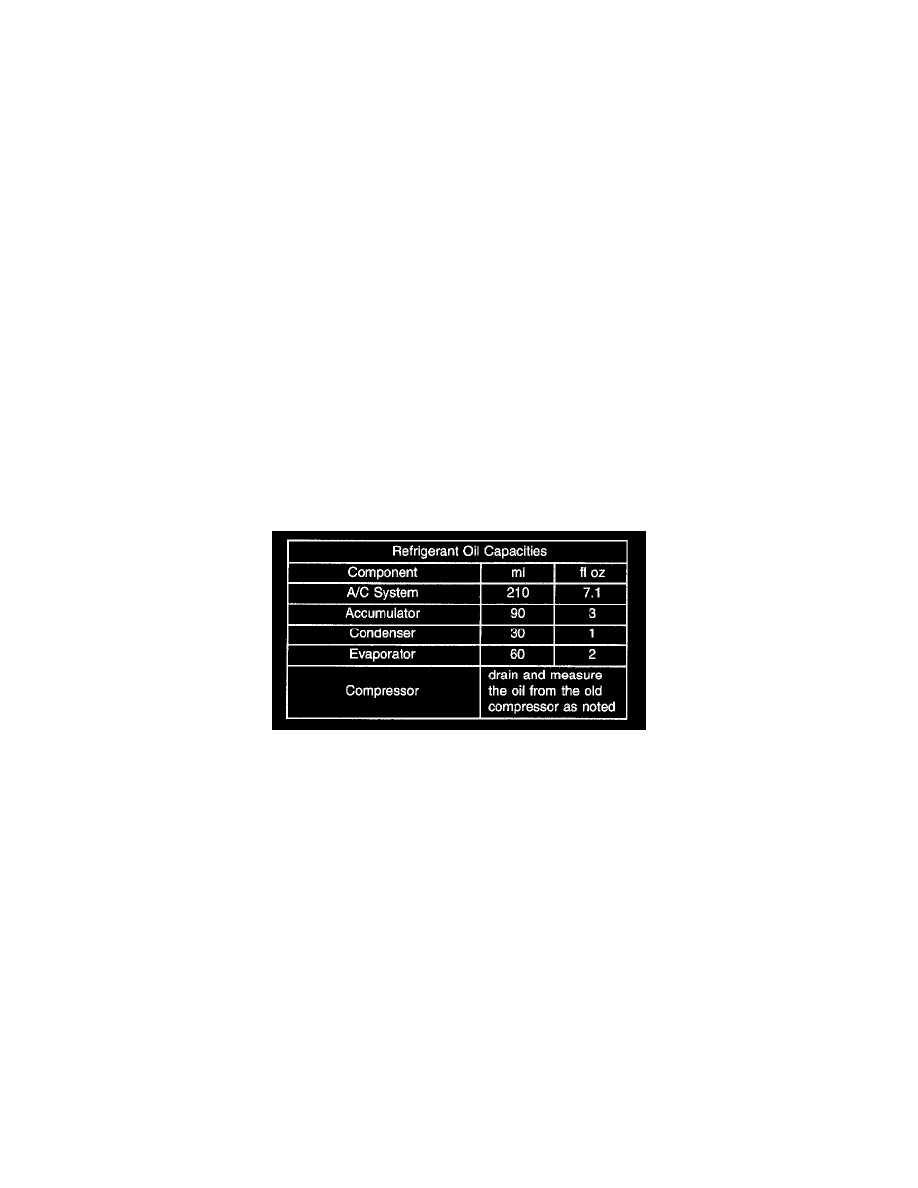Dakota Quad Cab 2WD V8-4.7L VIN N (2001)

Refrigerant Oil: Service and Repair
REFRIGERANT OIL
The refrigerant oil used in R-134a refrigerant systems is a synthetic-based, PolyAlkylene Glycol (PAG), wax-free lubricant. Mineral-based R-12
refrigerant oils are not compatible with PAG Oils and should never be introduced to an R-134a refrigerant system.
There are different PAG oils available, and each contains a different additive package. The SD7H15 compressor used in this vehicle is designed to
use an SP-20 PAG refrigerant oil. Use only refrigerant oil of this same type to service the refrigerant system.
After performing any refrigerant recovery or recycling operation, always replenish the refrigerant system with the same amount of the
recommended refrigerant oil as was removed. Too little refrigerant oil can cause compressor damage, and too much can reduce air conditioning
system performance.
PAG refrigerant oil is much more hygroscopic than mineral oil, and will absorb any moisture it comes into contact with, even moisture in the air.
The PAG oil container should always be kept tightly capped until it is ready to be used. After use, recap the oil container immediately to prevent
moisture contamination.
REFRIGERANT OIL LEVEL
When an air conditioning system is assembled at the factory, all components except the compressor are refrigerant oil free. After the refrigerant
system has been charged and operated, the refrigerant oil in the compressor is dispersed throughout the refrigerant system. The accumulator,
evaporator, condenser, and compressor will each retain a significant amount of the needed refrigerant oil.
It is important to have the correct amount of oil in the refrigerant system. This ensures proper lubrication of the compressor. Too little oil will
result in damage to the compressor. Too much oil will reduce the cooling capacity of the air conditioning system.
It will not be necessary to check the oil level in the compressor or to add oil, unless there has been an oil loss. An oil loss may occur due to a
rupture or leak from a refrigerant line, a connector fitting, a component, or a component seal. If a leak occurs, add 30 milliliters (1 fluid ounce) of
refrigerant oil to the refrigerant system after the repair has been made. Refrigerant oil loss will be evident at the leak point by the presence of a
wet, shiny surface around the leak.
Refrigerent Oil Capacities
Refrigerant oil must be added when a accumulator, evaporator coil, or condenser are replaced. See the Refrigerant Oil Capacities chart. When a
compressor is replaced, the refrigerant oil must be drained from the old compressor and measured. Drain all of the refrigerant oil from the new
compressor, then fill the new compressor with the same amount of refrigerant oil that was drained out of the old compressor.
